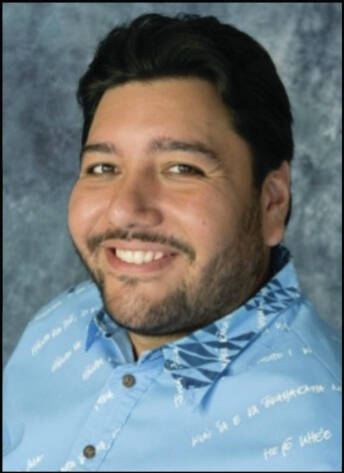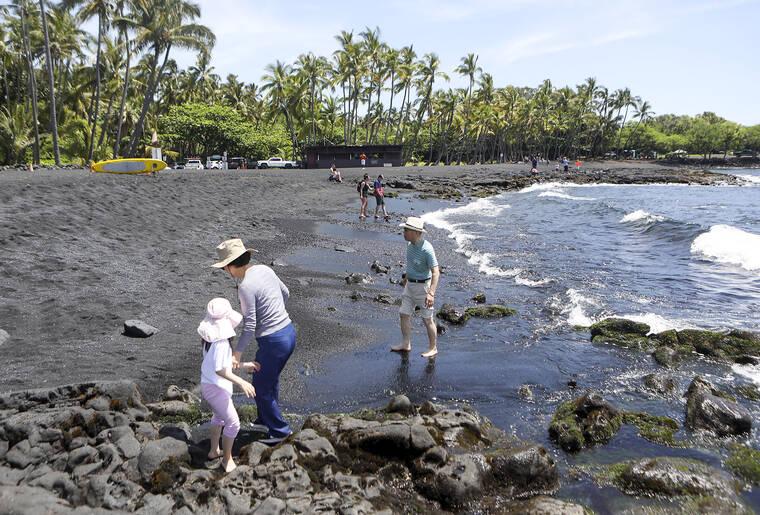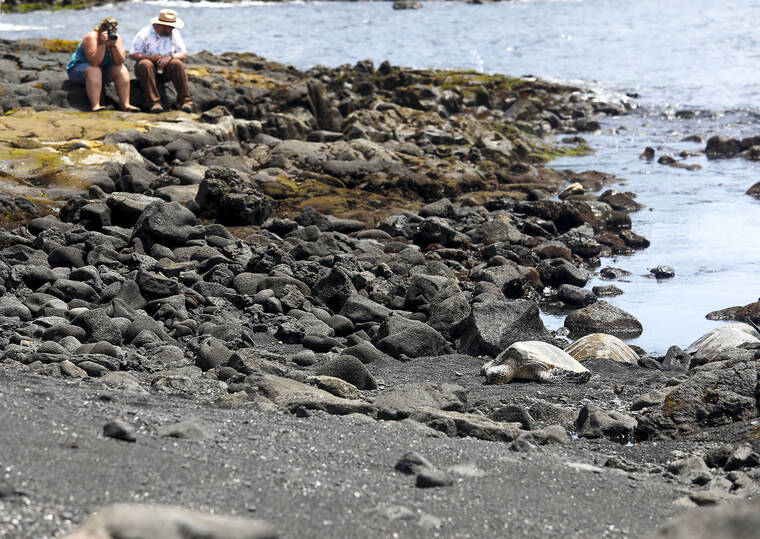HTA program to cover three additional areas on Big Island

GIONSON

Kelsey Walling/Tribune-Herald Visitors walk around and explore Punalu‘u Beach on April 26 in Ka'u.

Kelsey Walling/Tribune-Herald Visitors take photos and look at the sea turtles on April 26 at Punalu‘u Beach in Ka'u.
The Hawaii Tourism Authority will expand its Action Stewardship Program to cover Pohoiki, Punalu‘u and Kealakekua Bay in an effort to preserve natural and cultural resources.
The Hawaii Tourism Authority will expand its Action Stewardship Program to cover Pohoiki, Punalu‘u and Kealakekua Bay in an effort to preserve natural and cultural resources.
Those areas were identified as hotspot locations by HTA due to overcrowding, congestion, degradation of resources and other concerns.
ADVERTISING
“For Punalu‘u and Kealakekua, it’s kind of the classic story where the interest in the place is bigger than the infrastructure’s ability to welcome that number of folks,” said T. Ilihia Gionson, HTA’s public affairs officer. “It’s a little more difficult to get to Pohoiki following the eruptions, but the community is working to build up some of the human infrastructure needed to manage that spot ahead of the new road opening.”
Funding will come from HTA, and the Island of Hawaii Visitors Bureau will seek proposals from nonprofits and others to manage the programs. Those selected will create plans specific to the areas, and can help with data collection or providing on-site stewards.
“We do these request for proposals to make sure that the best ideas get vetted and to make sure that the people of Hawaii get the best value,” Gionson said, adding it’s a way for visitor dollars to go back into the community. “Statewide, there was $2 billion in visitor spending in Hawaii during the month of June only.”
The program will expand a current pilot underway in Keaukaha covering Richardson Ocean Park and Lehia Beach Park, which is being managed by the Keli‘i William Ioane Legacy Foundation
“We had a meeting where we got together as grassroot organizations about a month ago,” said ‘Ainaaloha Ioane from the foundation. “And this new (request for proposal) came out of that discussion, because we’re seeing similar things happening at our community spaces and feeling a sense of displacement.”
Ioane said traffic jams and a lack of oversight are concerns she’s noticed during the pilot program so far.
“Social media is really playing a role in telling a story about our community spaces, and we’re not in control of that story,” she said. “Visitors spend about 20 minutes, and then they leave, and as a family being at the beach, I feel like I’m on display.”
Ioane noted tour operators also are failing to communicate the importance of the areas.
“In defense for our visitors, they’re not being educated, and they’re not being told anything about how the way they are approaching our community spaces is hurtful towards us,” she said. “Instead, it’s more of an extraction: I’m going to take from this space what I need — a picture, a dream — and then I’m leaving.”
She said the group’s data collection has shown that there are days when two visitors are on the beach for every one local resident.
“The biggest benefit is for us to clearly understand what’s happening,” she said. “Now the question is, what do we do?”
Ioane said she’s started making pamphlets to help educate visitors and plans to host a County Council workshop in September to share some of the data the group has collected.
“The goal is that we can create or decide where the tour operators go, and what they’re sharing,” Ioane said. “It should be the homesteaders in Keaukaha sharing about Puhi Bay, it should be the King’s Landing residents sharing about Lehia.”
Suzan Champeny serves as one of the data collectors and stewards for the Keaukaha pilot program and also is a former Pohoiki resident.
“The problems we were seeing in Pohoiki, even back before the (2018 Kilauea) eruption, were the encroachment of tourism on a very lovely surf spot, the encroachment of people trespassing across sacred and private land, the constant incursions on Kumukahi of offroad vehicles,” Champeny said, adding that HTA’s funding has helped to provide a physical presence which deters some negative impacts.
“A 200- to 400-family neighborhood just does not have the people power to mount a 24/7 watch on a single beach park, much less a whole bunch of them,” she said. “But if there’s somebody there at least four or five days a week, eight hours of that day, minimum, and they’re paid, it really makes a difference.”
The Keaukaha program will run until the end of October, but Champeny is hopeful it will continue on, allowing the next generation to grow up in an area without displacement of local residents and with an understanding and respect for the space.
“The main difference I hope to make is for our keiki, our grand-keki and those coming up,” she said. “If they don’t get to interact with the ocean at a young age, they’re going to be in real trouble as adults. We need our children to know how to navigate this landscape.”
Proposals for the Pohoiki, Punalu‘u and Kealakekua Bay stewardship programs are due by 4:30 p.m. on Aug. 18 and can be submitted to IHVB Destination Manager Rachel Kaiama at rkaiama@hvcb.org.
Email Grant Phillips at gphillips@hawaiitribune-herald.com.


